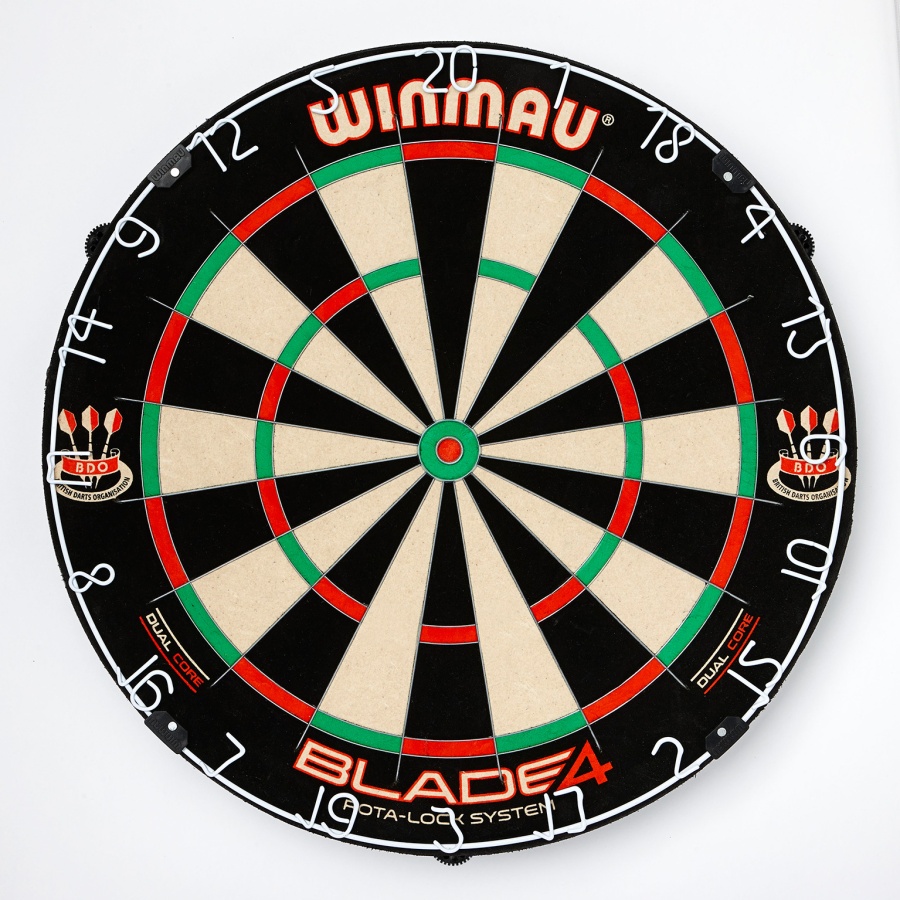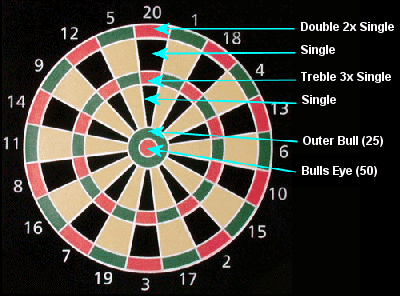WHY ARE THE NUMBERS ON A DARTBOARD IN THE ORDER THEY ARE?

This is probably the most asked question about the origins of the modern game. Who was the devious person who structured the segments of the dartboard in such a frustrating manner?
The man who is credited with the ‘invention’ of the numbering sequence of the modern standard dartboard by many writers is BRIAN GAMLIN. According to many so-called darts authors Gamlin was a carpenter from Bury in the County of Lancashire, England and came up with the infuriating sequence in 1896, at the age of 44. He died in 1903 before he could patent the idea.
In those days many working men – and in particular those with carpentry skills – manufactured dartboards out of elm or poplar wood as a sideline. This cottage industry was later prevalent across the North of England, the Midlands and the South East as darts grew in popularity from the mid-1920s onwards. The reason for producing dartboards at home, or more properly in the garden shed, was to sell the boards to local pubs, thereby supplementing the family income. However, more often than not, this income never found its way home at all. Dartboards were exchanged for credit in the local pub or money earned would finds its way back over the bar.
The numbering of a standard dartboard is designed in such a way as to cut down the incidence of ‘lucky shots’ and reduce the element of chance. The numbers are placed in such a way as to encourage accuracy. That’s it. Pure and simple. The placing of small numbers either side of large numbers e.g. 1 and 5 either side of 20, 3 and 2 either side of 17, 4 and 1 either side of 18, punishes inaccuracy. Thus, if you shoot for the 20 segment, the penalty for lack of accuracy or concentration is to land in either a 1 or a 5.
There are 2,432,902,008,176,640,000 different possible arrangements of the 20 segments on a standard dartboard so it is perhaps a little surprising that Gamlin’s arrangement of the numbers is almost perfect.
Gamlin himself is an enigma. Like the lost court records in the case of William ‘Bigfoot’ Annakin, there is a vital piece of information in the Gamlin story that is missing. Despite the most thorough of searches no record can be found of Gamlin’s death in 1903. Looking three years either side, for both counties of Lancashire and Suffolk reveal no one of that name terminating at that time. However, the answer may have been that this is because Gamlin was on the move.
The Daily Mirror in 1992 was asked the question “Who decided the numbers on a dartboard should be so jumbled and why?” The reply read:
“Brian Gamlin of Bury, Lancs, introduced the odd numbering system in our fairgrounds in 1896, boasting “No Skill Required”. Drunks had no chance, as a test of sobriety, the darts game ’round the clock’ (in which players have to score with darts in numerical order) became a great success”.
So this is why his death cannot be traced. If Gamlin was a showman then, sure, he would be on the road for at least six months of the year. It makes a lot of sense for the idea to have come from within the fairground community. They were the primary cause of the importation of so many ‘French darts’ which have, over the years become known as ‘fairground darts’. Darts has been a feature of fairground sidestuff from the mid-19th century onwards, so who better than a showman – always looking for new ways of attracting punters – to come up with this devious numbering arrangement?
[Note: For those new to the game of darts the left-hand side of the dartboard is recommended as there are proportionately more high numbers grouped there, i.e. 16, 8, 11, 14, 9 and 12. No huge scores can be guaranteed with this tactic, but at least you’ll never hit 5’s or 1’s. (At least that’s the theory!) This side of the dartboard is known as the ‘married man’s side’ because married men always play safe!]
But back to Brian Gamlin.
It is my considered, professional, opinion that the man never existed and has been the figment of someone’s mischievous imagination way back in the early-to-mid 1970s. No. The man who has the most sustainable claim to being the ‘inventor’ of the dartboard numbering sequence is a Yorkshireman named Thomas Buckle.
Buckle, a one-time craftsman, fireman and steeplejack, was a hobbyist who, during the early year of the twentieth century, made dominoes in his spare time, selling sets to local pubs and clubs in and around the Dewsbury area. By 1910 Buckle has transformed the cellar of his home into a workshop, and it was there in 1913 that he converted a fives board into the more complex twenty-segment dartboard with the numbering that is recognised as standard today.
Buckle’s board became known as the ‘Yorkshire Board’ and was later to be adopted and adapted in the south by the addition of a treble ring.
Between 1913 and 1916 Buckle moved from Dewsbury to a workshop in Crown Court, Leeds. He is listed as a ‘wireworker’ in the local trade directory for 1916. By 1938 Buckle is shown as a ‘dartboard maker’.
So it is not to Gamlin, for so many years believed to be the man responsible for the numbering that we should show appreciation but to Thomas Buckle.
© Patrick Chaplin 2007 (Updated August 2019)
For the full story of the development of the modern dartboard see my book ‘Darts in England 1900-39 – A social history (Manchester University Press, 2012 (paperback)

Awesome project. Something I thought of last year was a model that predicts where the dart will hit based on eye-tracking, previous throws, angle, etc. (calculated as soon as it leaves the hand)
LikeLike
Let me know if your project goes ahead. I’d be interested in learning of the results.
LikeLike
I am certain that Gamlin did not exist.
LikeLike
This blog is a fascinating exploration of the reasoning behind the order of numbers on a dartboard. I never really gave much thought to the arrangement until now. It’s intriguing to learn that there’s actually a purposeful pattern behind it.
LikeLike